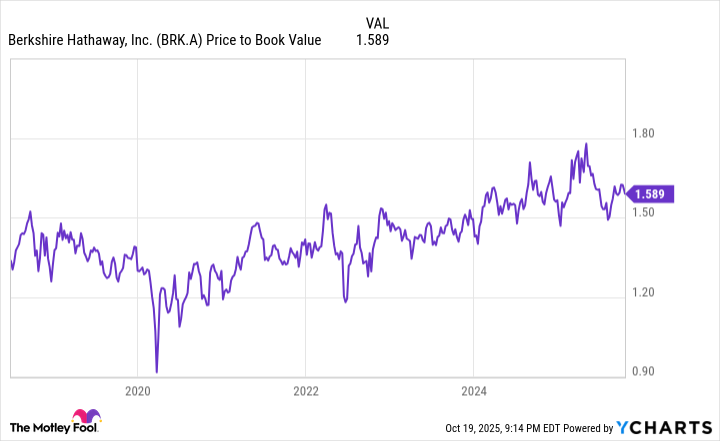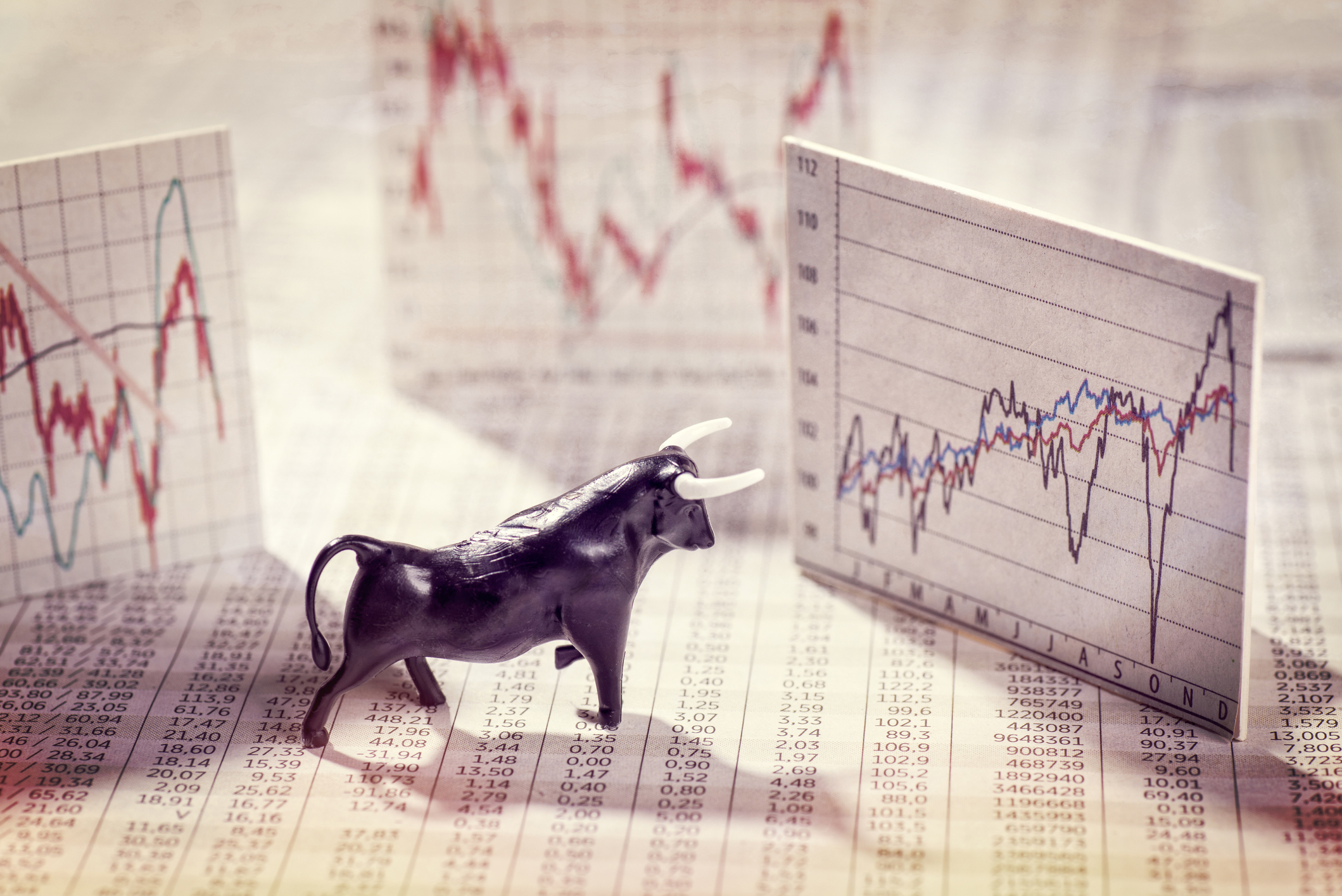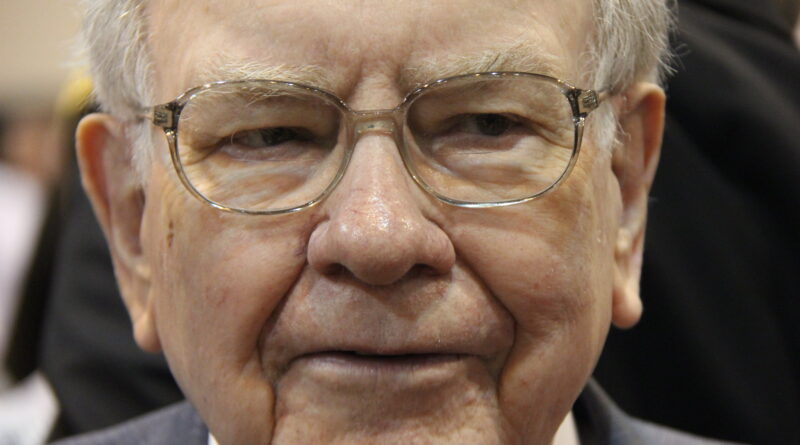Billionaire Warren Buffett’s 13-Month Warning to Wall Street Can’t Be Ignored | Colorful fool
The Oracle of Omaha hasn’t bought shares of its favorite stock in over a year, bringing the stock’s valuation right into the spotlight.
In about 10 weeks, one of Wall Street’s biggest investors will ride off into the proverbial sunset.
For the past 60 years, billionaire Warren Buffett has dazzled investors with his ability to uncover amazing deals hiding in plain sight. Since assuming the position of CEO of the company Berkshire Hathaway (NYSE:BRK.A)(NYSE:BRK.B) in the mid-1960s, the aptly named Oracle of Omaha oversaw a cumulative return of nearly 6,000,000% in his company’s Class A stock ( BRK.A ) by the closing bell on Oct. 17. S&P 500 (SNPINDEX: ^GSPC), Nasdaq Composite (NASDAQINDEX: ^IXIC)and Dow Jones Industrial Average (DJINDICES: ^DJI) from the water.
But as revealed during Berkshire Hathaway’s shareholder meeting in May, Buffett plans to step down as CEO and hand over day-to-day operations, including oversight of the investment portfolio, to pre-designated successor Greg Abel as 2025 draws to a close.
But this transition doesn’t come without a final warning from value-focused Warren Buffett.
For Warren Buffett, as an investor, nothing is more important than getting a good deal
For decades, the billionaire head of Berkshire Hathaway has increased his company’s book value through investments. He has overseen the acquisitions of roughly five dozen companies and holds stakes in nearly four dozen publicly traded companies in Berkshire’s $304 billion investment portfolio.
But since the end of the third quarter of 2022, there has been a decisive shift in the thought process of the Oracle of Omaha. It has been a net seller of the stock in each of the last 11 reported quarters (October 1, 2022-June 30, 2025). In plain English, it sells more shares in aggregate than it buys each quarter, totaling $177.4 billion.
This continued net selling activity is a reminder that Buffett puts “value” at the top of the pedestal when evaluating businesses for investment or acquisition. While there are some unwritten rules that Berkshire’s billionaire boss may be willing to break, such as thinking short-term about arbitrage opportunities, he doesn’t waver when it comes to getting a good deal.
The market cap to GDP ratio, affectionately known as the Buffett Indicator, recently hit an all-time high. Looking back to 1970, the cumulative value of all publicly traded stocks divided by US gross domestic product (GDP) averaged about 85%. Recently, the Buffett indicator reached 221%.
Buffett has shown a willingness to sit on his hands and let the accolades come into his wheelhouse.

Today’s Change
(-0.56%$-2.79
Current price
$491.29
Key data points
Market capitalization
1060 billion dollars
Daily range
$491.25 -$495.70
Range 52 weeks
$437.90 -$542.07
Volume
2.7 million
Avg. flight
4.4 million
Gross margin
24.15%
Dividend yield
ON
This billionaire’s warning cannot be ignored
However, it’s not Buffett’s lack of buying other stocks that tops the list of concerns. Rather, it’s the fact that, based on quarterly operating results, Berkshire Hathaway has advanced buying shares of its favorite stock — its own company — for 13 consecutive months.
Prior to July 2018, Berkshire Hathaway CEO stock buybacks were prohibited unless his company fell to or below 120% of book value (ie, no more than 20% above quoted book value as of the most recent quarter). Since Berkshire’s stock didn’t fall below that predetermined threshold, not a penny was spent on share buybacks.
On July 17, 2018, Berkshire Hathaway’s board amended the rules governing buybacks to get its CEO off the proverbial sidelines and into the game. The new guidelines allowed Buffett to pull the trigger on buybacks if Berkshire had at least $30 billion in combined cash, cash equivalents and U.S. Treasuries on its balance sheet and Buffett believed his company’s stock was really cheap.
For 24 consecutive quarters (July 17, 2018 – June 30, 2024), the billionaire Berkshire boss has bought shares of his own company’s stock. The nearly $78 billion he spent buying stock in his own company was far more than was spent on any other stock—including major stocks!
But in the last 13 months, from June 2024 to June 2025, Warren Buffett didn’t spend a dime buying his company’s stock.
“Why?” it looks very simple: rating.

BRK.A Price to Book Value data by YCharts.
During the 24th quarter, when Buffett hit the buy button on Berkshire Hathaway’s stock with some regularity, its stock traded between a 30% and 50% premium to book value. Over the previous year and change, this written premium has jumped to a relatively consistent range of 60% to 80%. No matter how much Warren Buffett likes a company (even his own), he won’t be a buyer if the valuation doesn’t make sense.
This is a warning to Wall Street that investors cannot ignore. If Berkshire’s billionaire boss doesn’t buy his own company’s stock, the stock’s valuation must be really out of order.
Six decades as CEO has taught the Oracle of Omaha the value of patience
Although Berkshire’s soon-to-retire CEO has been a decisive net seller of stocks and won’t be buying back his own company’s stock, he’s also an investor who won’t bet against the U.S. economy or the stock market.
No matter how dire things may seem for the US economy or Wall Street, the Oracle of Omaha’s experience has taught him that market timing always wins when trying to time the market.

Image source: Getty Images.
For example, the US economy has experienced 12 recessions since the end of World War II. No amount of maneuvering in fiscal or monetary policy can prevent these inevitable events from taking shape. But at the same time, the average of these 12 economic downturns resolved itself in 10 months, with none lasting longer than the 18-month recession during the financial crisis.
At the other end of the spectrum, the average economic expansion lasts about five years, with two of those growth periods lasting more than 10 years. A steadily growing economy leads to rising corporate profits and eventual record highs for the S&P 500, Nasdaq Composite and Dow Jones Industrial Average for long periods.
The same principles, based entirely on patience and following a simple numbers game, are evident on Wall Street.
June 2023 data set published on
Bespoke data showed that the average of 27 bear markets over nearly 94 years was just 286 calendar days, or less than 10 months. By comparison, a typical S&P 500 bull market lasted 1,011 calendar days, about 3.5 times longer.
The billionaire CEO of Berkshire Hathaway is well aware of this mile-long gulf between optimism and pessimism, which is why he’s chosen to be a long-term bull — even when valuations and/or economic data aren’t favorable for buying (at least in the short term).
